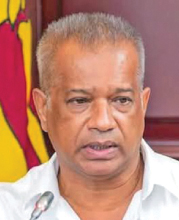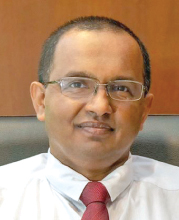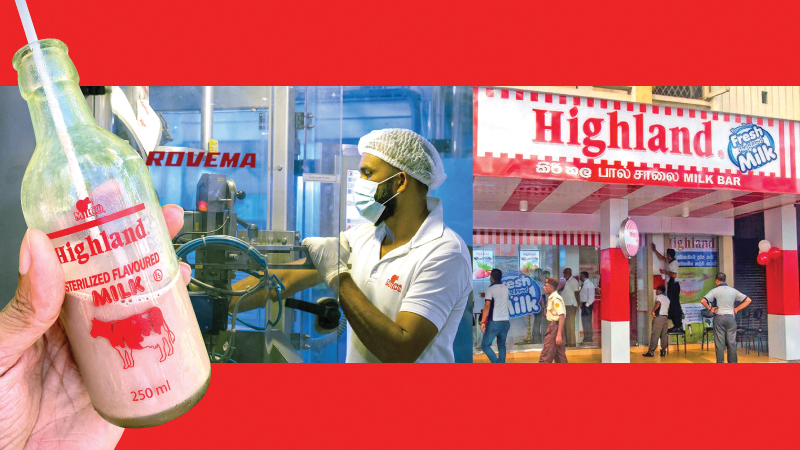 Once a quiet staple in the Sri Lankan dairy scene, Milco has now become the centre of a compelling turnaround story. Founded as a State-owned enterprise with the mission of supporting local dairy farmers and providing affordable dairy products to the nation, Milco had, for years, struggled under the weight of operational losses. Faced with mounting debts and inefficiencies, the previous administrations considered selling the company to ease the burden. However, the current Government decided to take a different route—reviving rather than relinquishing. Through a combination of strategic management, investment, and vision, Milco has not only returned to profitability but is now in the midst of a nationwide expansion.
Once a quiet staple in the Sri Lankan dairy scene, Milco has now become the centre of a compelling turnaround story. Founded as a State-owned enterprise with the mission of supporting local dairy farmers and providing affordable dairy products to the nation, Milco had, for years, struggled under the weight of operational losses. Faced with mounting debts and inefficiencies, the previous administrations considered selling the company to ease the burden. However, the current Government decided to take a different route—reviving rather than relinquishing. Through a combination of strategic management, investment, and vision, Milco has not only returned to profitability but is now in the midst of a nationwide expansion.
What sets Milco apart is its deep connection to the Sri Lankan farming community and its commitment to producing dairy products using fresh, locally sourced milk. Unlike some of its competitors that rely on imported milk powder, Milco supports thousands of rural dairy farmers, helping sustain local livelihoods while ensuring that consumers receive milk of the highest quality and freshness.
Milco’s roots stretch back to 1956, when it was established under the purview of the Government to strengthen the dairy industry in Sri Lanka. Originally known as the National Milk Board, it evolved over time into Milco (Pvt) Ltd., operating popular regional factories in Ambewela, Digana, Narahenpita, and Polonnaruwa. For decades, Milco was a household name, synonymous with products such as Highland milk, yoghurt, ice cream, and curd. However, operational issues, outdated technology, and inconsistent milk collection practises gradually led to financial strain.
In the not-so-distant past, Milco was running at a loss, with low productivity and a shrinking market share. Yet, interestingly, consumer trust in Milco products never waned. Even amid the financial woes, there remained a strong demand for Highland-branded goods, driven by their taste, affordability, and quality assurance. This consumer loyalty became a cornerstone for the company’s revival.
At one point, the former Government considered selling shares of Milco to Amul, the Indian dairy giant known for revolutionising India’s dairy industry. Discussions were initiated, and there was considerable public and political debate surrounding the potential loss of a national asset. Concerns about local farmers’ futures and the independence of Sri Lanka’s dairy sector led to resistance. Eventually, the sale did not materialise, and the Government took the bold step of reclaiming Milco’s potential through reform rather than sale.
Today, Milco stands reinvigorated. The company has established over 300 new outlets across the country with around 180 of them now active. Still, this marks a significant step towards making its products more accessible than ever. This resurgence is being powered by a comprehensive program launched by the new Government, aimed at strengthening local industries and creating job opportunities. A key part of this initiative is the plan to establish 500 new Milco sales outlets, providing direct market access to rural milk producers and ensuring that fresh products reach urban and suburban consumers efficiently.
In addition to expanding its retail footprint, Milco is also investing in modernising its production facilities, improving cold chain logistics, and introducing new product varieties tailored to changing consumer tastes. Plans are under way to launch flavoured milk, probiotic yohgurt, and lactose-free options to cater to growing health-conscious demographics.
Minister of Agriculture, Livestock, Lands and Irrigation – K.D. Lalkantha
 “The livestock sector is a very important part of agriculture. In Sri Lanka, we have two main institutions that work for the development of the livestock sector. These are Milco and the National Livestock Development Board (NLDB). These two organisations play a big role in milk production and other livestock-related activities in the country.
“The livestock sector is a very important part of agriculture. In Sri Lanka, we have two main institutions that work for the development of the livestock sector. These are Milco and the National Livestock Development Board (NLDB). These two organisations play a big role in milk production and other livestock-related activities in the country.
Right now, we are working on a new plan. By bringing Milko and the National Livestock Development Board together, we want to start a strong and modern program to improve milk production in Sri Lanka. This program is expected to make a big difference in how we manage livestock and produce milk.
As part of this new effort, we held a special event on May 22 at the main hall of the Ministry of Agriculture. At this event, we appointed 500 new representatives to help with the distribution of Highland products all over the country. These new representatives will help us take Highland dairy products to more shops and households. This step is very important to improve the marketing and availability of local dairy products.
We also plan to focus more on the production process. By combining the strengths of Milko and NLDB, we want to create a more efficient and productive system. One of our key goals is to get better livestock, especially high-quality cows, through the National Livestock Development Board. Better animals mean more milk, which is good for both farmers and consumers.
However, we also face some challenges. The Department of Livestock, which plays an important role in this sector, is facing many problems. It has been damaged over the years, and many officer positions are vacant. There are not enough field officers working on the ground. In the past, these areas were neglected, and sometimes the work was given to foreign companies or imported systems. That was not good for local development.
We now understand that we must fix these problems. We must create new programs to help farmers get more milk from each animal. We must also provide them with good calves and healthy livestock. In addition to Government work, we believe that the private sector must also play a role. The private sector is already involved, and we welcome their support.
It is also important to say that we are not against foreign or local private investment. We are open to both, as long as they help our national goals. We are building a system that combines Government, private sector, and community participation to improve livestock and dairy production.
In short, we are working hard to rebuild and improve this sector. With better planning, good support for farmers, and strong teamwork between institutions such as Milco, NLDB, and the Department of Livestock, we can achieve big results. Our goal is to make Sri Lanka self-sufficient in milk production and give people better, healthier dairy products in the future.”
Chairman, Milco Private Limited – G.V.H. Gotabhaya
 “When we took over Milco, the company was in serious financial trouble. The bank overdraft was around Rs. 1.8 billion, and we owed suppliers about Rs.1.7 billion. Payments were delayed for more than a month and a half, and some products like milk powder were stuck in storage, not distributed. Employees felt insecure, thinking the company might shut down or be handed over to a foreign company.
“When we took over Milco, the company was in serious financial trouble. The bank overdraft was around Rs. 1.8 billion, and we owed suppliers about Rs.1.7 billion. Payments were delayed for more than a month and a half, and some products like milk powder were stuck in storage, not distributed. Employees felt insecure, thinking the company might shut down or be handed over to a foreign company.
Since then, we have made many changes. First, we improved the distribution system, making it more modern and efficient. We expanded our network and made it more formal. Second, we focused on adding new and diverse products to the market. For example, Highland Gold is one of the new products we introduced.
We also started paying our supplier debts regularly. The bank overdraft has been reduced from Rs. 1.8 billion to Rs. 1.3 billion. This helped us manage our production technology better, and step by step, we solved many of the technical problems. Now, we’re seeing better efficiency in production, and we hope to increase that even more. But we are still not able to fully meet the growing demand for our products.
From the farmers’ side, milk supply had dropped in the past. In January 2024, we received only 68,000 litres per day, but now it has increased to around 100,000 litres daily. This still changes depending on the season. But farmers trust us again, and that trust is growing.
There are also several issues related to the outlets. In 2024, we received much less milk from dairy farmers compared to this year. As a result, we were unable to supply our products to the outlets consistently. However, after the new board of directors was appointed, the milk supply from farmers increased. This year, our daily milk collection has gone up by about 50,000 litres compared to 2024. Because of this, we are now able to supply Milco products to outlets more regularly.
Despite this improvement, we still cannot fully meet the demand. For example, there is a high demand for Highland milk powder in many outlets, but we currently produce only about 500,000 packs per month. This is not enough to meet the full demand. However, by continuing to support and empower dairy farmers, we hope to increase our production capacity in the future.
We are also planning to open 500 new milk outlets across Sri Lanka. At present, only about 180 outlets are active, and some had to close for various reasons. Our goal is to set up at least one outlet in every major town, making it easier for people to buy our products. These outlets will also create new jobs and business opportunities, especially for young entrepreneurs. Regional development banks are helping by giving loans to start these shops.
We also plan to include products from other State-owned companies such as Lanka Thriposha and the National Livestock Development Board in these outlets. This will improve product availability and offer more variety for consumers. We are focusing especially on fresh liquid milk, which is in high demand in cities. We want to encourage people to choose locally produced fresh milk over imported alternatives.
In the future, we plan to create a Milk Development Fund. A small amount from the sales of Milko products will go into this fund. It will support dairy farmers by helping improve their livelihoods and farming standards. We also plan to work with the Agricultural Insurance Board to provide insurance for dairy cows, and offer technical training to farmers through our team.
With all these steps, we believe we can make a strong and lasting improvement in Sri Lanka’s dairy industry.”









